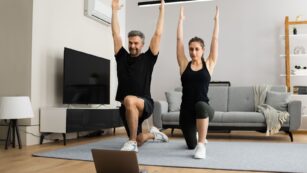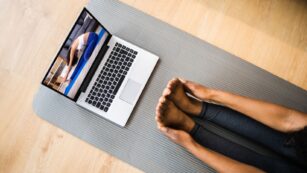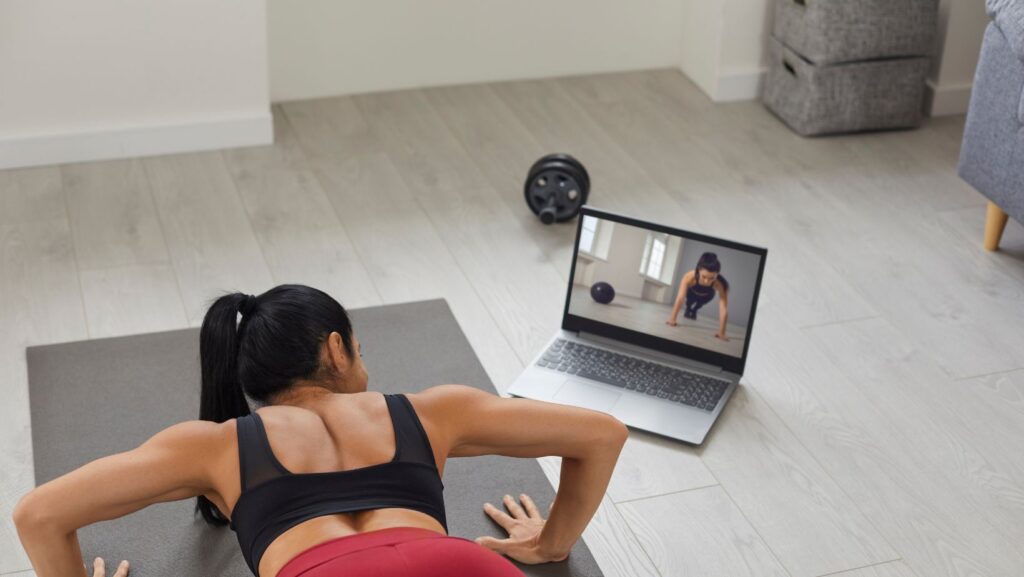In today’s digital age, live streaming fitness classes have become a dynamic way for instructors to connect with participants far and wide. As fitness enthusiasts seek convenience and personalization, streaming workouts from the comfort of their homes offers a perfect solution. However, delivering a high-quality virtual class requires more than just a good workout routine; it demands technical savvy and a keen understanding of your audience’s needs.
Tips for Live Streaming Fitness Classes
Optimize Your Equipment Setup
 Ensuring quality video and audio is crucial for the success of live streaming fitness classes. Fitness instructors should invest in a high-definition camera and a reliable microphone. Lighting plays an important role, too; clear, bright visuals help keep viewers engaged and ensure they can see all movements clearly.
Ensuring quality video and audio is crucial for the success of live streaming fitness classes. Fitness instructors should invest in a high-definition camera and a reliable microphone. Lighting plays an important role, too; clear, bright visuals help keep viewers engaged and ensure they can see all movements clearly.
Technical glitches can disrupt the experience and reduce engagement. Instructors need to familiarize themselves with their streaming platform, whether it’s Zoom, YouTube Live, or another service. Running a few test streams helps iron out any connectivity or software issues.
Create an Engaging Environment
The background and setting of a fitness class can significantly influence its appeal. Instructors should aim for a clutter-free, professional-looking space. Adding personal touches such as plants or artwork can enhance the visual appeal. Maintaining a clean and tidy environment helps keep the focus on the workout.
Interact with Your Audience
Engagement remains key in virtual settings. Instructors ought to address participants by name and encourage interaction through live chats. Asking questions and providing personalized shout-outs during the session fosters a sense of community and keeps participants motivated.
Offer Clear Instructions and Modifications
 Instructors must provide clear, concise instructions and demonstrate each exercise before performing it. Mentioning modifications for different fitness levels ensures all participants can follow along safely and effectively. This practice also helps in catering to a broader audience, enhancing the inclusivity of the class.
Instructors must provide clear, concise instructions and demonstrate each exercise before performing it. Mentioning modifications for different fitness levels ensures all participants can follow along safely and effectively. This practice also helps in catering to a broader audience, enhancing the inclusivity of the class.
Running the class in a structured manner keeps participants informed about what to expect next. Instructors should outline the session at the beginning and give cues for upcoming changes in activity. A predictable flow helps participants prepare mentally and physically, enhancing their workout experience.
Monitor and Adapt Based on Feedback
Feedback is invaluable. Instructors should encourage participants to share their experiences and suggest improvements. Regularly evaluating this feedback and adapting the class format or exercises accordingly can lead to higher satisfaction and retention rates among participants.
Setting Up Your Space
Creating a professional and inviting space is crucial for delivering high-quality live streaming fitness classes. Proper setup not only enhances visual and audio quality but also increases participant engagement and satisfaction.
Lighting and Background
 Good lighting is imperative to ensure viewers can clearly see instructors during live streaming fitness classes. It enhances visual clarity and elevates production value. Instructors benefit from positioning their lighting source in front of them, avoiding overhead lights that can create harsh shadows. Soft, natural light often works best, but if that isn’t an option, using softbox lights or ring lights can mimic daylight effectively.
Good lighting is imperative to ensure viewers can clearly see instructors during live streaming fitness classes. It enhances visual clarity and elevates production value. Instructors benefit from positioning their lighting source in front of them, avoiding overhead lights that can create harsh shadows. Soft, natural light often works best, but if that isn’t an option, using softbox lights or ring lights can mimic daylight effectively.
The choice of background is equally important, as it sets the ambience of the class. A clean, clutter-free area helps maintain focus on the instructor. Adding elements that align with fitness, such as workout equipment or motivational posters, contributes positively to the visual experience. On the other hand, a messy or distracting background can detract from the user’s focus and professionalism of the class.
Camera and Audio Equipment
The quality of camera and audio equipment greatly affects the overall experience of live streaming fitness classes. Instructors should invest in a high-definition camera that ensures clear video output. Positioning the camera at eye level helps simulate a face-to-face interaction, making the class feel more personal and engaging.
Superior audio quality is equally critical. Participants will stay motivated if they can hear instructions clearly without straining. A high-quality microphone, ideally a wireless lapel microphone, is a great choice because it allows freedom of movement without sacrificing sound quality. Testing all equipment before starting classes helps minimize technical issues, maintaining a professional and seamless flow during the live session.

